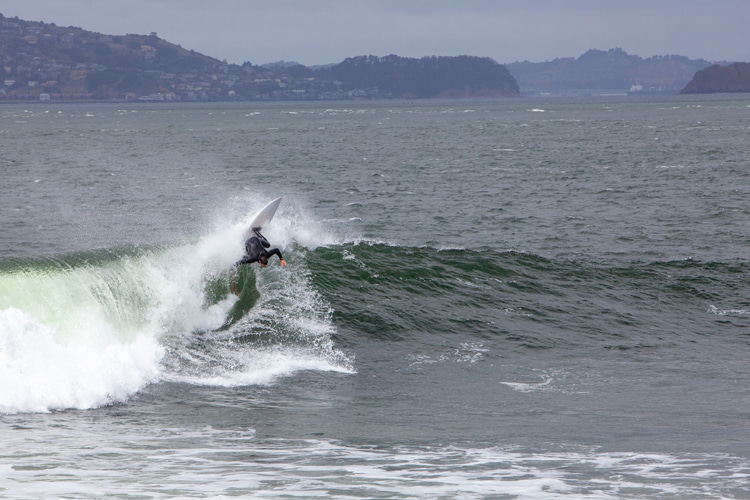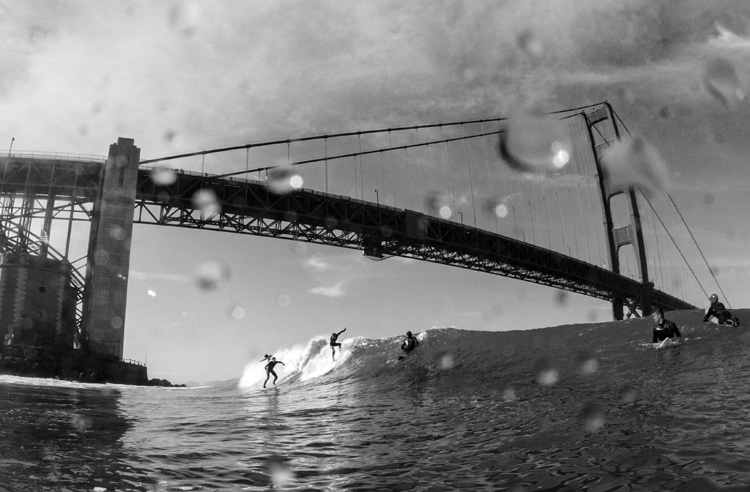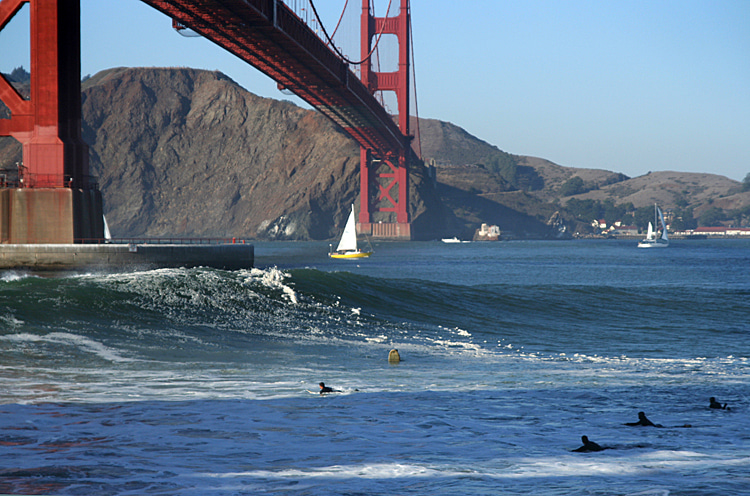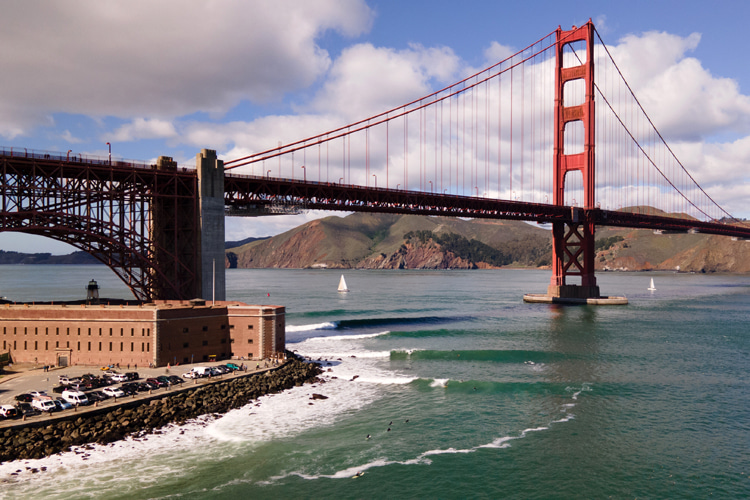It is one of the most picturesque and unusual surf spots on the planet, but also a challenging and exciting one. Meet San Francisco's Fort Point.
If there's one surf spot where photos are most likely to impress surfers and non-surfers, it is Fort Point.
The photogenic left-hand point break peels from just across the iconic masonry fortification located on the south side of the Golden Gate Bridge toward the local picnic spot.
The imposing, 1.70-mile (2.74-kilometer) long suspension bridge opened in 1937 serves as the backdrop for a tricky yet highly sought-after novelty wave.
Fort Point only comes alive once in a while. It's a rare and sensitive gem with many secrets and hidden dangers.
The place is fed by unique, angled swells from the Pacific Ocean's Gulf of Farrallones, which must align with tides to deliver perfect surf.
On epic days, "The Fort" will provide a series of well-drawn wave lines that no surfer can resist.
There are several problems that are not immediately disclosed when you stand on the Crissy Field's promenade.
The legendary San Francisco surf break has strong currents that can suck you all the way out the gate.
Furthermore, the slippery rocks in the lineup and the shipping hazards make it an idyllic wave-riding arena for advanced and experienced surfers only.
On December 13, 2020, experienced bodyboarder and cherished San Francisco pie maker Haruwn Wesley died at Fort Point after hitting a large rock, becoming unconscious and submerging underwater.
The 64-year-old was riding double overhead waves, something he had been doing on the spot for decades.
Despite its unpredictability and rare nature, the funky Fort Point stays clean during large winter swells, south winds, and a low, rising tide.

A Highly Defended Surf Break
Localism is also something that should be mentioned and taken into consideration before paddling out.
If you don't respect the informal rules of surf etiquette and drop in on the locals, you will probably get into trouble.
In April 2003, a 31-year-old and a 23-year-old surfer were convicted of assaulting a 32-year-old bodyboarder in 2001.
The victim was punched in the nose and had his head held underwater.
The older surfer was banned from surfing federal parks in or near San Francisco for three years and ordered to serve 150 days of home confinement.
The younger surfer was sentenced to three years of probation and community service.
The attackers were also ordered to distribute leaflets warning fellow surfers that violence is against the law.
More recently, someone tried to ride Fort Point on a foil surfboard.
As if bringing a dangerous watercraft to a crowded surf break wasn't per se a very bad idea, the foiler was using a boat to tow into the wave before everyone.
The consequence was a foilboard destroyed by locals using the nearby rocks.

The Challenging Ride
The ride at Fort Point is unforgettable, though, with a mix of steep take-offs, occasional barreling opportunities, and mushy sections.
If you take off on a good-looking overhead wave, it will wrap around the shore and take well into the San Francisco Bay.
Remember to kick out smoothly because the surf terminal is often rocky.
Climbing up and down the rocks can be challenging due to their extreme slipperiness.
If you misjudge the tide, you may find yourself scaling them while waves crash against you.
Additionally, in certain situations, a stumble during take-off could result in being propelled directly into the boulder-strewn seawall.
Fort Point is one of the few surf spots in California, if not the only one, that faces northeast.
The ideal conditions are a straight west swell or a big northwest swell with an incoming tide.
The 20-foot swells that often pound the Northern California coastline and threaten container ships offshore will be the ones that light up "The Fort."
So, if the swell outside the Bay is at the right angle, you can dream of perfect eight-foot-plus walls of water peeling non-stop at San Francisco postcard surf break.
But beware: during winter, the tide goes from 7 to -2.2 feet in six hours, meaning that the current moving out of the mouth of the Bay at Fort Point can be faster than eight knots.
As a result, on a big day, surfers who paddle too far outside and an outgoing tide have been swept out to sea, making landfall more than a mile up the coast.

Wait For Your Turn
If you're new, start by catching the leftovers inside before getting yourself acquainted and moving to the main peak.
This is a very competitive break where everyone is trying to get the best positioning in a small take-off spot.
Some surfers get themselves closer and closer to the rocks to be in the sweetest, deepest spot and hold priority.
Consequently, you might have to take off so deep that you must make it through a section to avoid colliding with the inside rocks.
If someone drops in on you, chances are you'll end up in the rocks.
So, if you choose to sit inside, you may be fortunate to get an unridden wave or a wave on which a surfer wiped out.
To access Fort Point's dream left-hand wave, go through the Presidio, down Long Avenue, to Marine Drive, and to the parking lot.
It's like revisiting Alfred Hitchcock's "Vertigo," but in a surf movie version.
